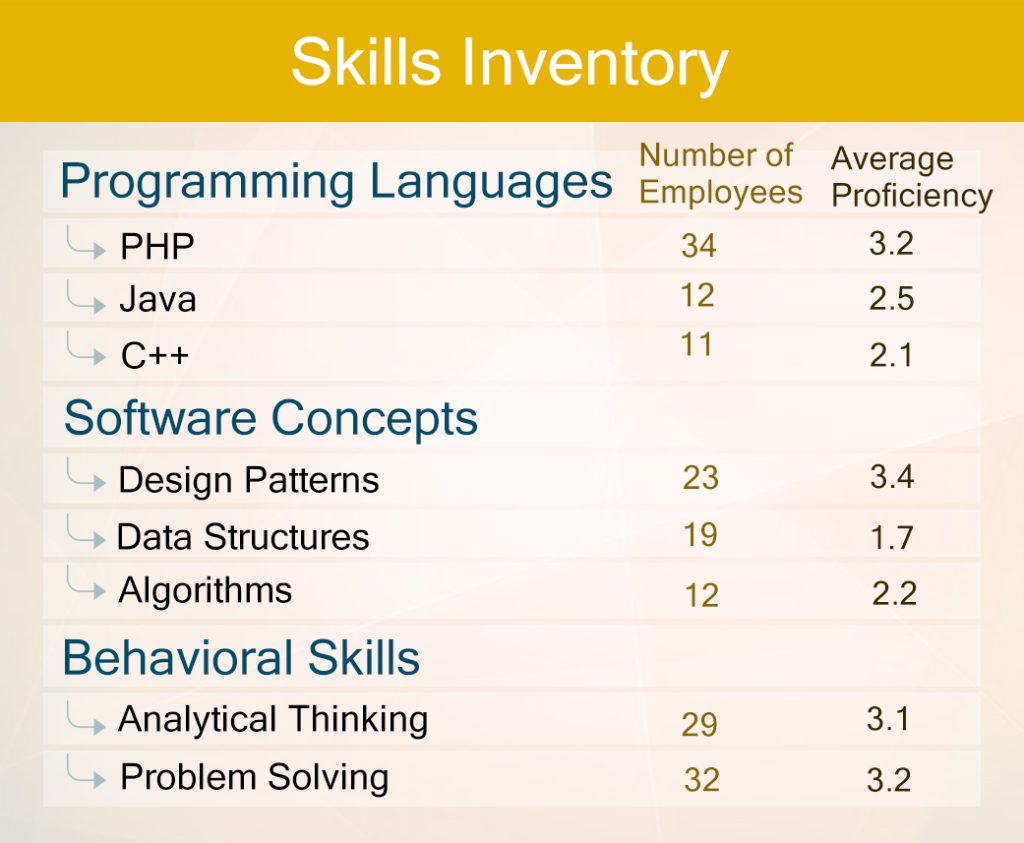As organizations become more digital, there’s a growing need to hire new skills or to “upskill” existing skills. In a rapidly changing workforce, organizations can no longer simply hire based on ‘traditional” job roles and profiles. Instead, they need a skills-based approach to hiring and retaining their talent.
However, this is easier said than done! 40% of CEOs fear that their organizations may not remain economically sustainable over the next decade. What they need is digital transformation in the quickest possible time. Having said that, transformation must start from within the company – and must include how to deploy their workforce talent to meet business challenges.
Skills taxonomy and skills ontology are the two terms that decode the modern language of workforce skills. With these two approaches, organizations can build an efficient skill management framework that makes them productive and competitive in the changing market. Let’s take a detailed look at Skills Ontology vs Taxonomy in this blog.
Skills Ontology vs Taxonomy
No matter which skill, every organization needs a structured approach to skills management in the modern era. This means that every skill must be logically organized in a structured manner. Both taxonomy and ontology in skills are essentially used for workforce skill classification. As a result, HR teams often confuse skills ontology and skills taxonomy and tend to use them synonymously (without realizing their differences).
Also Read:- Elevating Careers: The Role of Soft Skills Taxonomy
Let’s try to address some of their differences. First, let’s understand each of these terms:
- Skills taxonomy is more detailed and uses a hierarchical approach to skill classification. The classification categories are predefined according to the organizational needs. For instance, a restaurant can organize its food categories as appetizers, main dishes, and desserts. Each category is further subdivided into subcategories – vegetarian and non-vegetarian under appetizers.
In a business organization, a skills taxonomy can have the “Communications” category, which includes “Communication skills” as its subcategory.
- Skills ontology is also used to categorize skills – but these categories may not be based on the current organizational needs. By definition, skills ontology is a semantic framework that represents the relationship between different skills.
For instance, a city map shows the various roads and buildings located in proximity to each other. Each of these elements does not belong to the same category – but forms part of the ontology as they are related due to their proximity.
In the organization, “communication skills” and “presentation skills” are different skills but are part of the same ontology.
In the simplest terms, a skills taxonomy is a group of related workforce skills arranged in hierarchical order. On the other hand, skills ontology is used to build multidimensional relationships among various skills. Effectively, it connects various skill taxonomies to share information about the existing skills in the organization.
With a skills ontology, business managers can answer questions such as:
- Which skills are needed to execute a particular project?
- Does my organization have the necessary skill taxonomy to meet its requirements?
Next, let’s understand the difference between skills taxonomy and ontology with an example.
Also Read:- Why Your Organization Needs a Skills Ontology Framework
Example of Skills Ontology vs. Taxonomy
While the skills taxonomy is more defined and static, skills ontology can change based on the customer requirements. Here’s an example of a home improvement company servicing a customer looking to repair his home:
A skills taxonomy can present the list of skills required to:
- Building a deck
- Installing new lights and ceiling fans
- Changing the toilet
For each task, the skills ontology presents all the related information and materials needed to complete the task.
For example, deck building requires related skills, including:
- Installing the supporting deck posts
- Selecting the right lumber material
- Determining the right saw and deck screws
While this may sound simple, deck building is challenging as it requires a combination of related skills, which the company needs to have to meet this customer’s requirement. Similarly, other customers will have other requirements for improving their homes. The skills ontology thus needs to provide a list of connected skills (across the entire enterprise) to satisfy every customer’s needs.
How do organizations go about choosing the best skills management tool based on skills ontology and taxonomy? Let’s discuss that in the next section.
Skills Ontology vs. Taxonomy – Which Tool to Choose?
Effective skills management is the mantra for success in any modern organization. With the right tool in skills management, HR managers can keep track of:
- The existing skills and competencies in their organization.
- The required skills and competencies in their organization.
- The right employee development and training program.
At the same time, HR professionals must understand the differences between skills taxonomy and ontology in their workforce management. Most skills management tools in the market rely on a skills taxonomy framework, which categorizes and organizes skills based on a hierarchical structure.
These skill management tools have a host of drawbacks, including:
- Frequent overlaps and redundancies occur when the same skill is included in multiple categories (or groups).
- Lack of flexibility to adapt to changing workforce requirements.
As compared to skills taxonomy, skills management tools (with skills ontology) enable improved skills mapping and relationships between different skills. For instance, this tool can identify the combination of skills (or capabilities) most valuable to the organization. Additionally, they can identify the skills necessary for employees to be more competent at their work – or in their careers.
To summarize, organizations need both skills taxonomy and ontology to implement effective skills management. Organizations need to customize their skills management strategy based on their specific requirements.
Here are some questions that they need to address:
- What are your goals in workforce skill management?
- Which are the goals with the highest priority?
- What are your existing process dependencies?
Conclusion
Organizations need an efficient skills-based approach to make the best decisions to meet their evolving job requirements. With an AI-powered skills ontology tool, they are finding it easier to develop the right skills management framework. With the addition of diverse skills, a skills ontology tool is more suited to modern organizations than a skills taxonomy tool.
Since its inception, IYS Skills Tech has focused on a variety of skills management solutions designed for the benefit of our customers. Here are some of our skill management tools:
- Skills Taxonomy – The comprehensive database of diverse skills across industries and business functions
- Skills Profiler – The tool used to create and map skill profiles.
- Skills Analytics – The application used to capture real-time skills data for decision-making.
We have the right tools and expertise to transform you into a skills-based organization. If you wish to take this forward, drop us an email at connect@iysskillstech.com.





